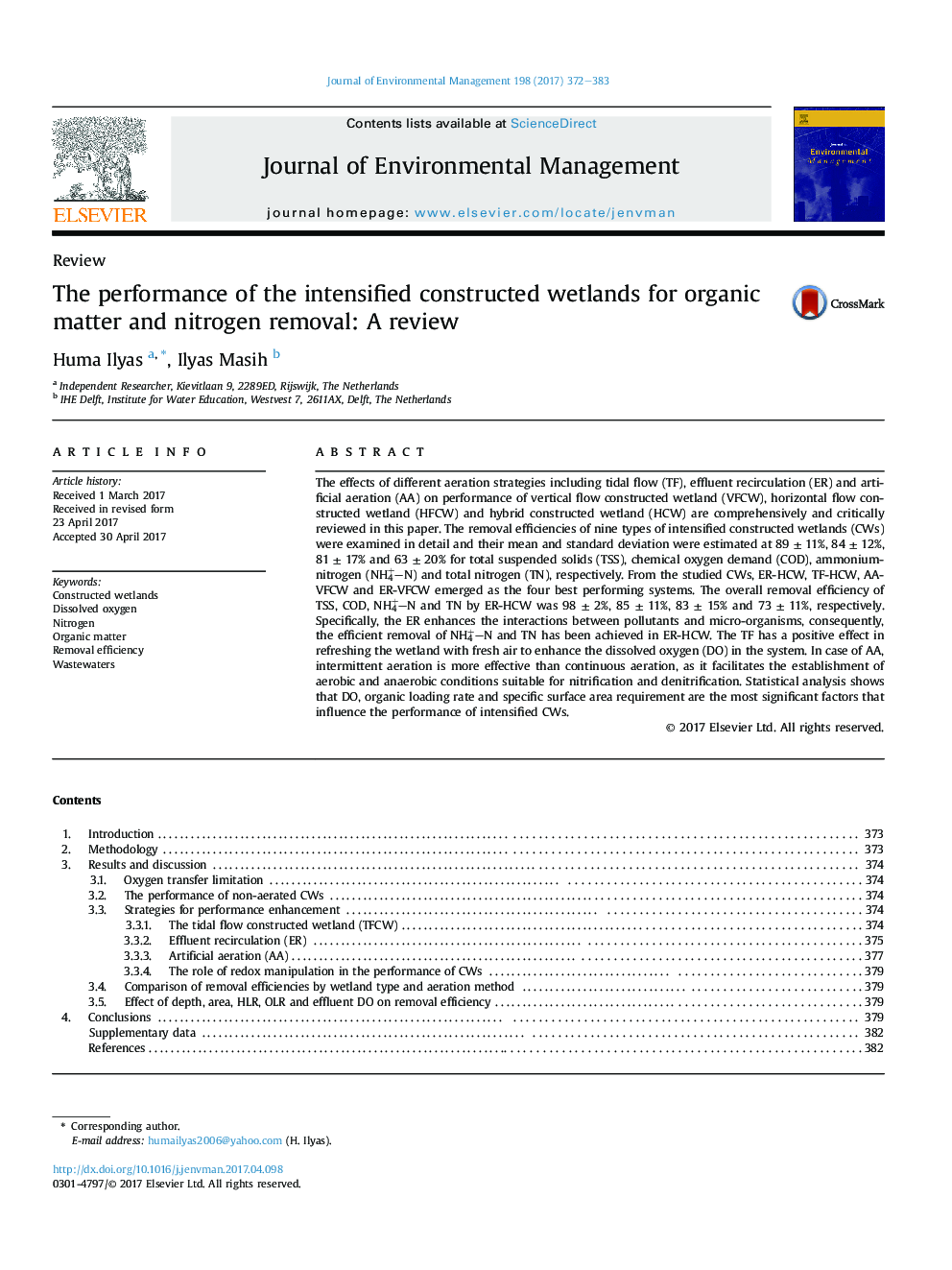| کد مقاله | کد نشریه | سال انتشار | مقاله انگلیسی | نسخه تمام متن |
|---|---|---|---|---|
| 5116762 | 1378105 | 2017 | 12 صفحه PDF | دانلود رایگان |
عنوان انگلیسی مقاله ISI
The performance of the intensified constructed wetlands for organic matter and nitrogen removal: A review
ترجمه فارسی عنوان
عملکرد تالابهای تشدید شده برای حذف مواد آلی و نیتروژن: بررسی
دانلود مقاله + سفارش ترجمه
دانلود مقاله ISI انگلیسی
رایگان برای ایرانیان
کلمات کلیدی
تالاب های ساختمانی، اکسیژن محلول، نیتروژن، مواد ارگانیک، راندمان حذف، فاضلاب
موضوعات مرتبط
مهندسی و علوم پایه
مهندسی انرژی
انرژی های تجدید پذیر، توسعه پایدار و محیط زیست
چکیده انگلیسی
The effects of different aeration strategies including tidal flow (TF), effluent recirculation (ER) and artificial aeration (AA) on performance of vertical flow constructed wetland (VFCW), horizontal flow constructed wetland (HFCW) and hybrid constructed wetland (HCW) are comprehensively and critically reviewed in this paper. The removal efficiencies of nine types of intensified constructed wetlands (CWs) were examined in detail and their mean and standard deviation were estimated at 89 ± 11%, 84 ± 12%, 81 ± 17% and 63 ± 20% for total suspended solids (TSS), chemical oxygen demand (COD), ammonium-nitrogen (NH4+N) and total nitrogen (TN), respectively. From the studied CWs, ER-HCW, TF-HCW, AA-VFCW and ER-VFCW emerged as the four best performing systems. The overall removal efficiency of TSS, COD, NH4+N and TN by ER-HCW was 98 ± 2%, 85 ± 11%, 83 ± 15% and 73 ± 11%, respectively. Specifically, the ER enhances the interactions between pollutants and micro-organisms, consequently, the efficient removal of NH4+N and TN has been achieved in ER-HCW. The TF has a positive effect in refreshing the wetland with fresh air to enhance the dissolved oxygen (DO) in the system. In case of AA, intermittent aeration is more effective than continuous aeration, as it facilitates the establishment of aerobic and anaerobic conditions suitable for nitrification and denitrification. Statistical analysis shows that DO, organic loading rate and specific surface area requirement are the most significant factors that influence the performance of intensified CWs.
ناشر
Database: Elsevier - ScienceDirect (ساینس دایرکت)
Journal: Journal of Environmental Management - Volume 198, Part 1, 1 August 2017, Pages 372-383
Journal: Journal of Environmental Management - Volume 198, Part 1, 1 August 2017, Pages 372-383
نویسندگان
Huma Ilyas, Ilyas Masih,
